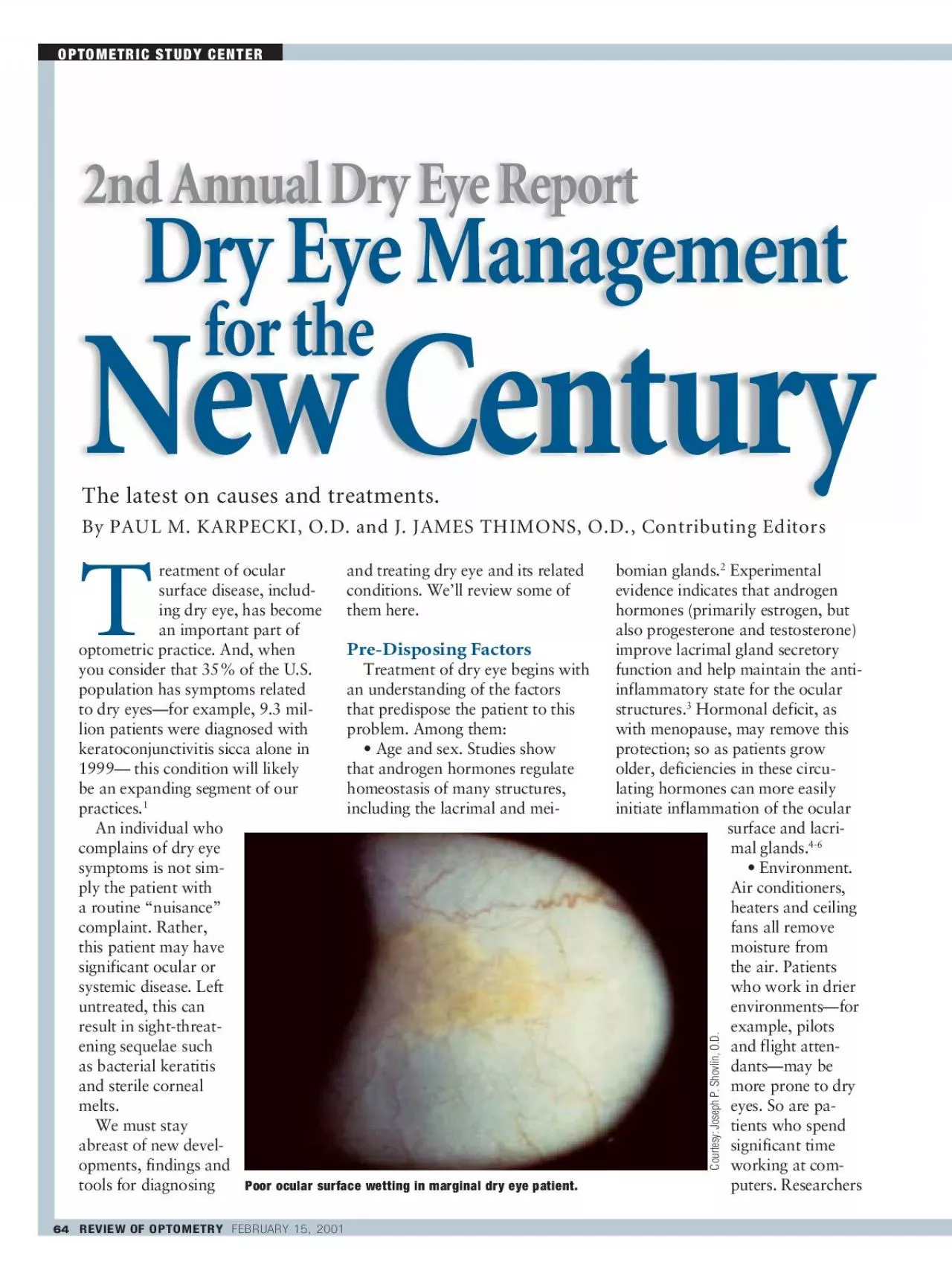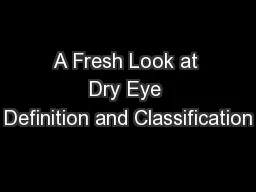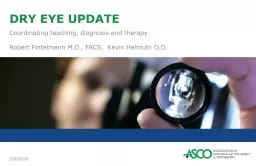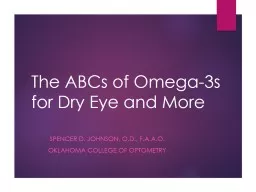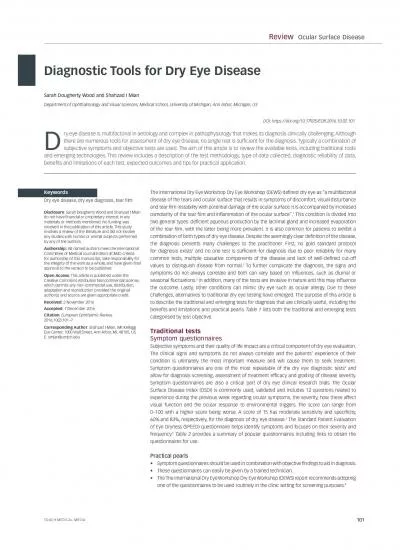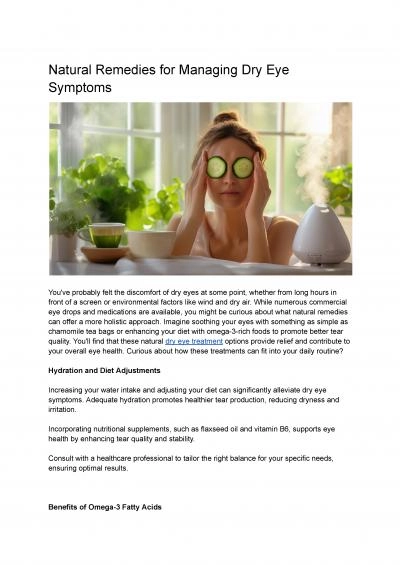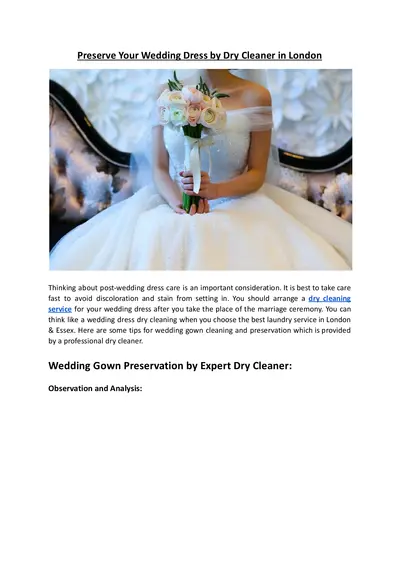PDF-2nd Annual Dry Eye Report Dry Eye Management for theNew Cent
Author : cady | Published Date : 2022-08-31
OPTMETRIC STUDY ENTERREVIEW OF OPTOMETRY FEBRUARY 15 2001 P have found a correlation between smoking and significant caffeine intake and dry eye and now consider
Presentation Embed Code
Download Presentation
Download Presentation The PPT/PDF document "2nd Annual Dry Eye Report Dry Eye Man..." is the property of its rightful owner. Permission is granted to download and print the materials on this website for personal, non-commercial use only, and to display it on your personal computer provided you do not modify the materials and that you retain all copyright notices contained in the materials. By downloading content from our website, you accept the terms of this agreement.
2nd Annual Dry Eye Report Dry Eye Management for theNew Cent: Transcript
Download Rules Of Document
"2nd Annual Dry Eye Report Dry Eye Management for theNew Cent"The content belongs to its owner. You may download and print it for personal use, without modification, and keep all copyright notices. By downloading, you agree to these terms.
Related Documents

